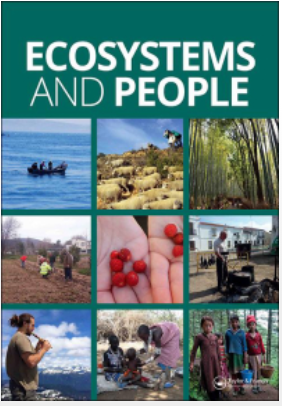城市森林中有害物质的地理分布:公众参与地图绘制以实现闭环
IF 3.7
Q1 Agricultural and Biological Sciences
引用次数: 3
摘要
摘要利用公众参与GIS地图对城市森林中的文化生态系统服务进行研究是一个成熟的研究领域。然而,也阐明感知到的危害的研究要少得多,因此省略了人类与森林关系的一个重要部分。提高对令人不快的地方的了解可以促进户外娱乐,并帮助森林管理者专注于重要的服务。这项研究旨在从空间上识别人们对城市森林的感知,重点关注不愉快的经历。我们通过收集德国西南部三个城市森林中城市居民的公众参与GIS数据(PPGIS),在空间上得出了感知的损害和CES(755名受访者绘制了1552个损害地点的地图)。我们使用Spearman秩调查了社会人口特征与地图上的地点数量之间的关系。我们还利用Spearman秩探讨了不良服务和消费电子产品之间的空间一致性。我们确定了森林游客感知厌恶的重要性等级。我们发现,根据现有的生态系统破坏类型学(EDS),城市森林游客的负面认知广泛来源于人及其踪迹,很少来自生态系统。我们发现年龄和映射服务的数量之间存在显著关系。我们发现了不喜欢的地方集群以及不良服务和消费电子产品之间的相关性,表明消费电子产品的热点反过来也是不良服务的热点。我们得出的结论是,城市林业工作者最好通过推进城市森林游客在森林内空间流动的指导概念来解决破坏问题,以避免各种利益相关者之间的冲突。我们的研究结果可能有助于城市林业工作者更好地管理森林和游客的各种兴趣。本文章由计算机程序翻译,如有差异,请以英文原文为准。
Geography of disservices in urban forests: public participation mapping for closing the loop
ABSTRACT Studies on cultural ecosystem services (CES) in urban forests using Public Participation GIS mapping are a well-established field of research. However, far fewer studies do exist that also illuminate perceived disservices, thus omitting an important part of human-forest relationships. Advancing knowledge on unpleasant places can promote outdoor recreation and help forest managers focus on disservices that matter. This study aims at spatially identifying people’s perceptions in urban forests with focus on unpleasant experiences. We elicited perceived disservices and CES spatially by collecting Public Participation GIS data (PPGIS) from city dwellers in three urban forests in Germany’s Southwest (755 respondents mapped 1552 places of disservices). We investigated relationships between sociodemographic characteristics and the number of mapped places using Spearman’s rank. We also explored the spatial concurrence between disservices and CES using Spearman’s rank. We identified a hierarchy of importance of forest visitors’ perceived dislikes. We revealed that negative perceptions of urban forest visitors originated broadly from people and their traces and rarely from the ecosystem according to existing ecosystem disservices typologies (EDS). We found a significant relationship between age and the number of mapped services. We found clusters of disliked places and correlations between disservices and CES, indicating that hotspots of CES in turn are also hotspots of disservices. We conclude that city foresters may best address disservices by advancing guidance-concepts for spatial movements of urban forest visitors within the forest to avoid conflicting clusters of various stakeholders. Our results may help city foresters to better manage both the forest and visitors’ various interests.
求助全文
通过发布文献求助,成功后即可免费获取论文全文。
去求助
来源期刊

Ecosystems and People
Agricultural and Biological Sciences-Ecology, Evolution, Behavior and Systematics
CiteScore
7.80
自引率
11.30%
发文量
40
审稿时长
42 weeks
期刊介绍:
Ecosystems and People is an interdisciplinary journal that addresses how biodiversity and ecosystems underpin human quality of life, and how societal activities and preferences drive changes in ecosystems. Research published in Ecosystems and People addresses human-nature relationships and social-ecological systems in a broad sense. This embraces research on biodiversity, ecosystem services, their contributions to quality of life, implications for equity and justice, and the diverse and rich ways in which people relate to nature.
 求助内容:
求助内容: 应助结果提醒方式:
应助结果提醒方式:


